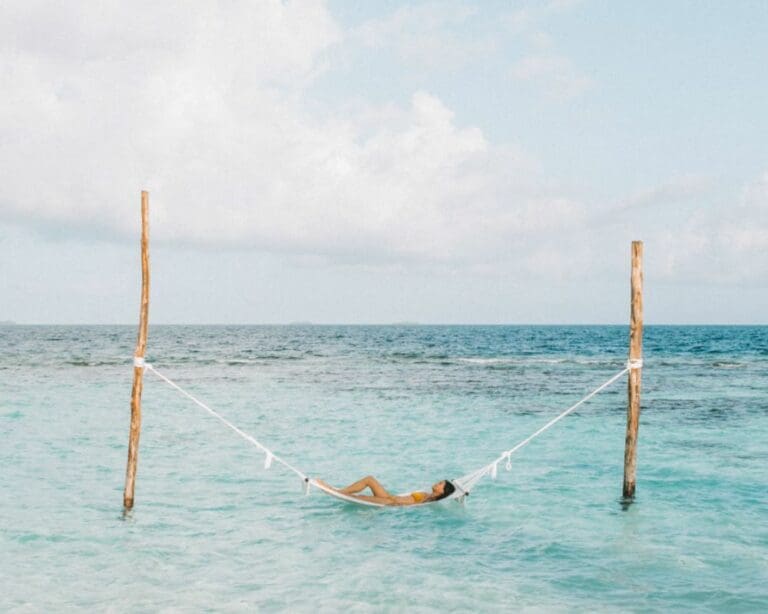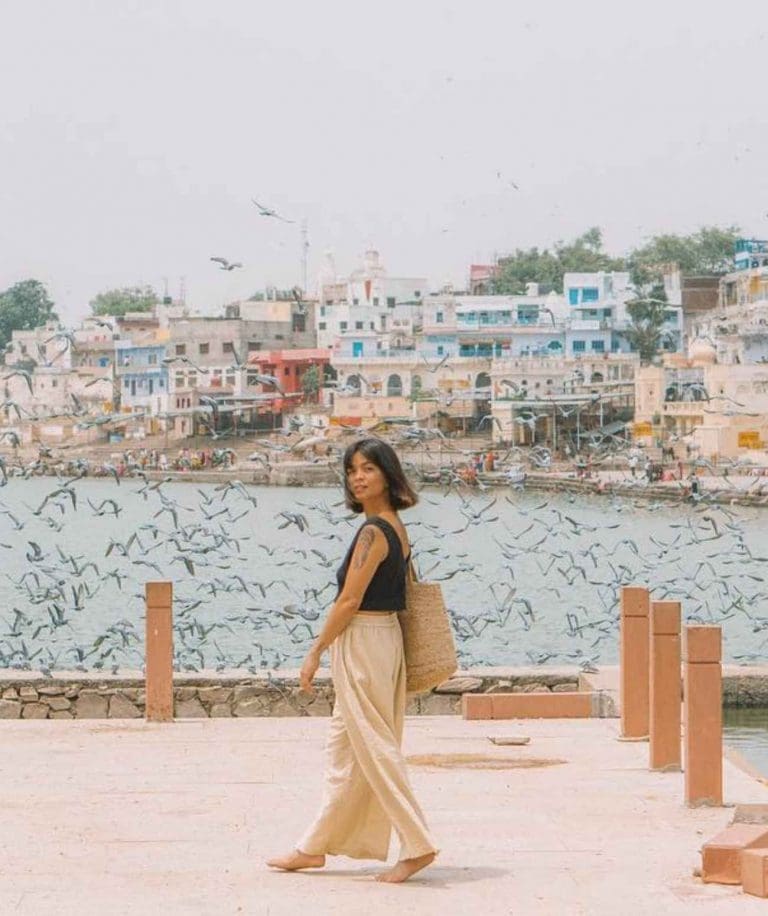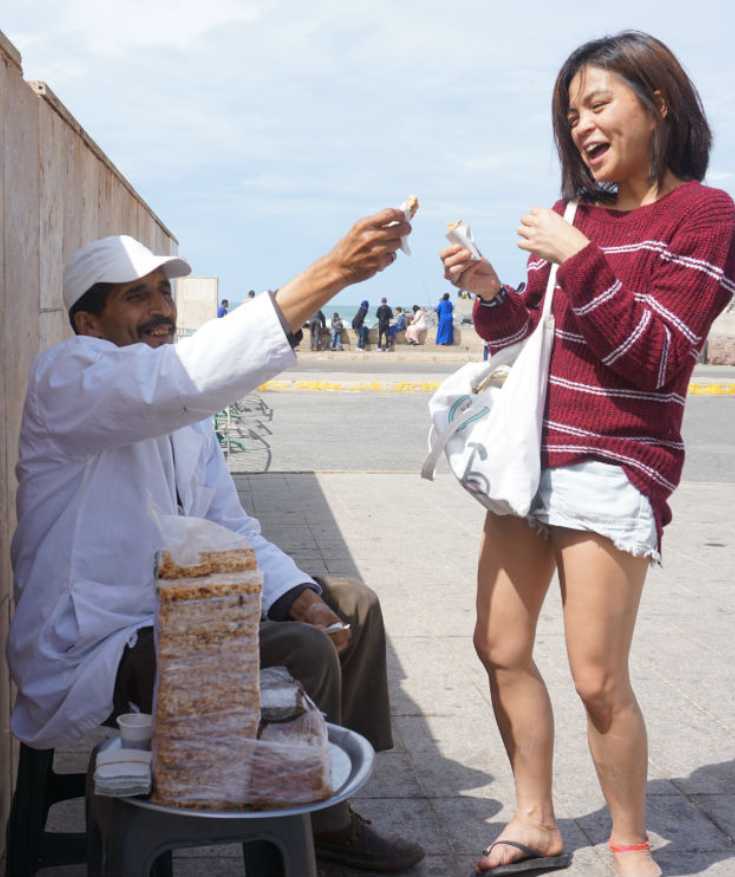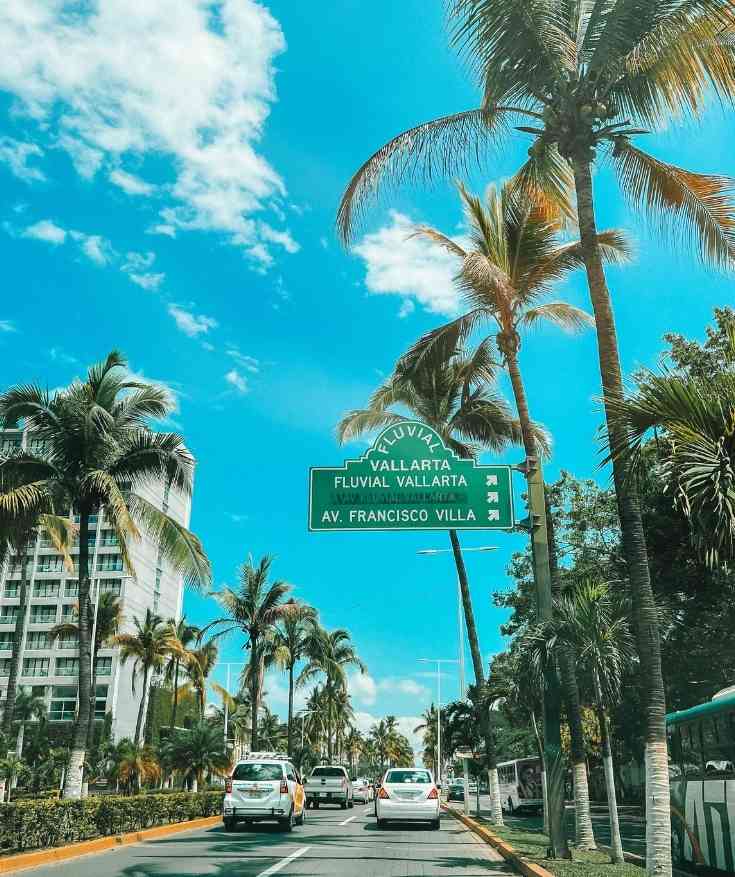What month is best to go to Morocco? Read this month-by-month guide and find out!
The best time to visit Morocco is during spring and autumn. However, if you want more detailed weather for specific activities and certain destinations, read on to see how to plan your trip accordingly.
Hi Trisha! I followed your Morocco road trip last summer and I wanted to do the same. I always thought Morocco is unsafe so thanks for sharing your journey. I do not like very hot weather so I was wondering if you have any other recommendations on the best time to visit Morocco? Something a little bit cooler but still enough to visit beaches. Thanks for all your travel tips!
Avenall Pirouet, France

Bonjour, Avenall!
Thank you for your e-mail! As a digital nomad who is constantly moving, I never really planned my visit to Morocco well in terms of weather so this is a good question that will help travelers a lot!
I have been to Morocco many times (in different months) and it’s quite important to know the best time to visit. For example, one of my trips was during Ramadan!
Although Ramadan is an interesting culture, I felt that I was limited during this time. Fortunately, I was not in a hurry and had planned to stay in Morocco for 3 months.
But if you are going on a particular month or have a limited time, read on and let me know if you have any questions. Good luck and I hope you make it to Morocco!
Xx, Trisha
You might also like:
- Morocco itinerary: 5, 7, 10, and 14 days useful travel plan
- Is Morocco expensive? Here’s my Morocco travel budget
- How are female tourists treated in Morocco?
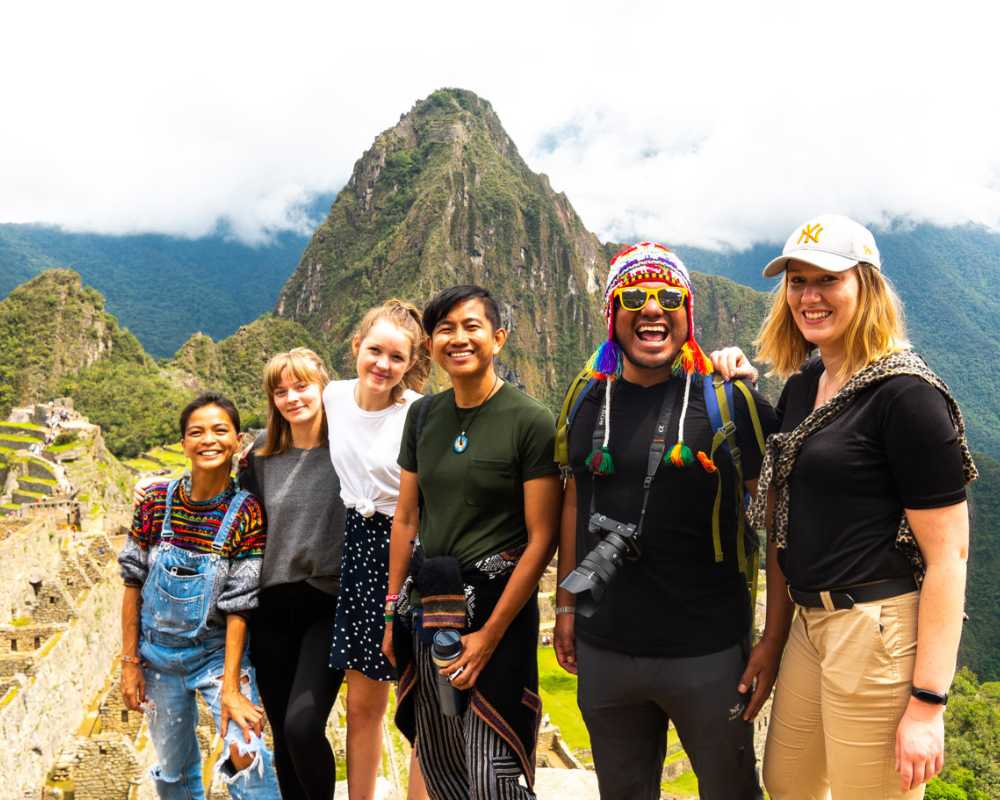

Scared to travel alone? Why not join my trips?
Change the way you travel and spend your money on trips that matter – trips that you will never forget. My group trips are highly focused on responsible travel, supporting local communities, and avoiding the obligatory touristic circuit.
☀️ Best time to visit Morocco for good weather
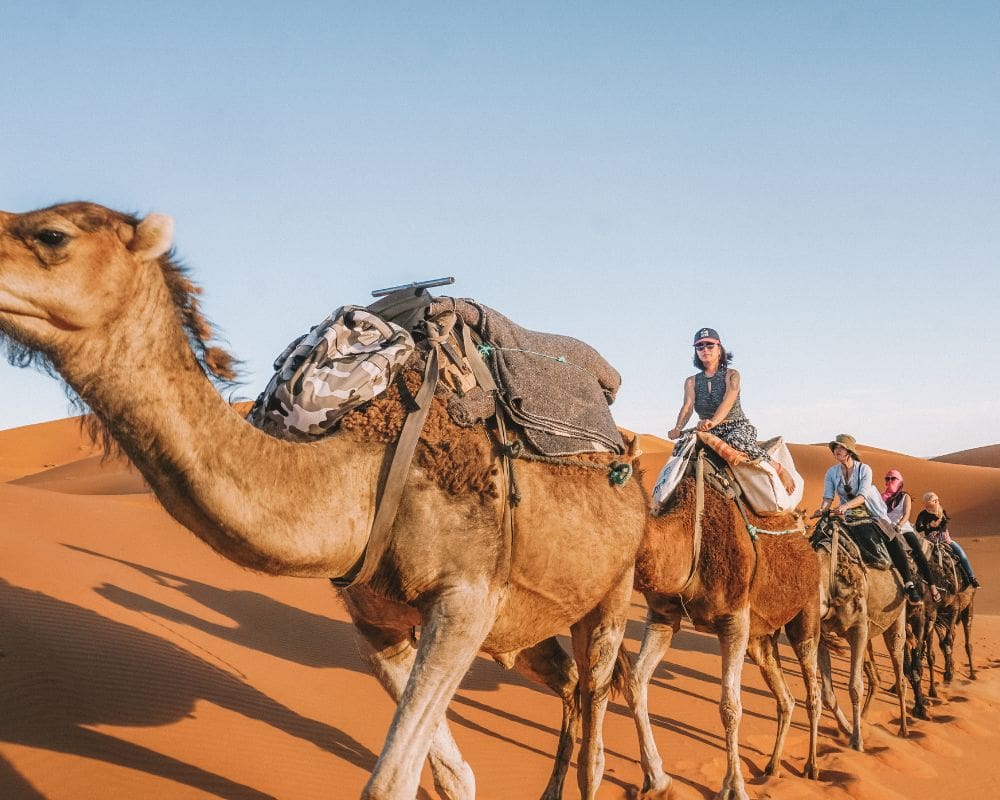

The best time to visit Morocco for good weather is during the spring (March to May) and autumn (September to November).
These periods offer a pleasant climate suitable for a wide range of activities, from exploring cities to trekking in the mountains.
What month is best to visit Morocco?
Spring, from March to May are the best months to visit Morocco. Average temperatures range from 18°C to 24°C (64°F to 75°F) in major cities like Marrakech and Fez.
Coastal areas like Casablanca and Essaouira have cooler averages, around 16°C to 20°C (61°F to 68°F). The Atlas Mountains are milder and perfect for trekking, with temperatures around 10°C to 15°C (50°F to 59°F).
From September to November, temperatures in Marrakech and Fez hover around 18°C to 25°C (64°F to 77°F), offering warm days and cooler evenings. Coastal regions maintain a moderate climate, averaging 18°C to 22°C (64°F to 72°F).
In the Atlas Mountains, expect cooler conditions, around 12°C to 20°C (54°F to 68°F), ideal for hiking and nature exploration.
🇲🇦 Planning your trip to Morocco? I can help you with that! From itinerary planning to safety in traveling to Morocco, I can give you genuine tips on a 1-1 call. Let’s chat! [Book a call with Trisha]
💲 Cheapest months to visit Morocco
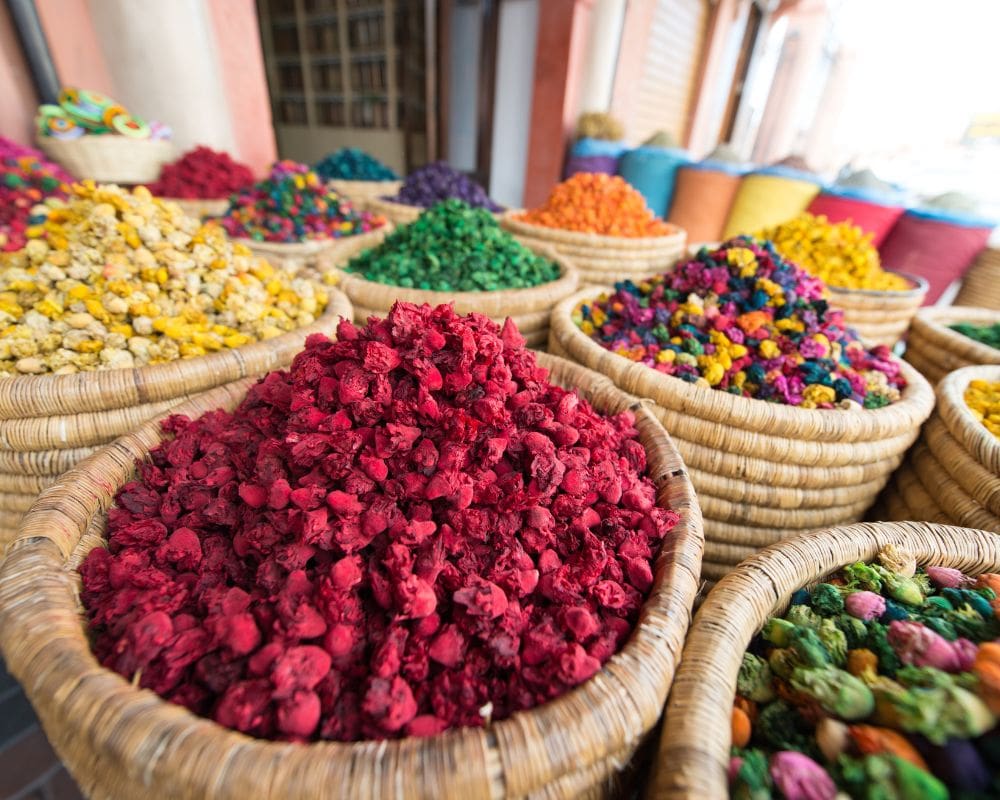

The cheapest months to visit Morocco are typically during the shoulder seasons, which fall between the peak tourist periods and the off-season.
These are generally in the early spring (March to April) and late autumn (October to November). From March to April, winter crowds start to thin out, prices for flights and hotels begin to drop.
The weather is starting to warm up, but it’s not yet the hot summer, making it a comfortable time for sightseeing and outdoor activities.
After the summer rush in the months of October and November, the tourist numbers dwindle, leading to more competitive prices in travel and accommodation.
The weather is still pleasant, avoiding the chill of winter, perfect for exploring cities and natural landscapes.
This period is also outside of major holiday seasons, which typically see a spike in travel costs.
🗺️ Best time to visit Morocco for fewer crowds
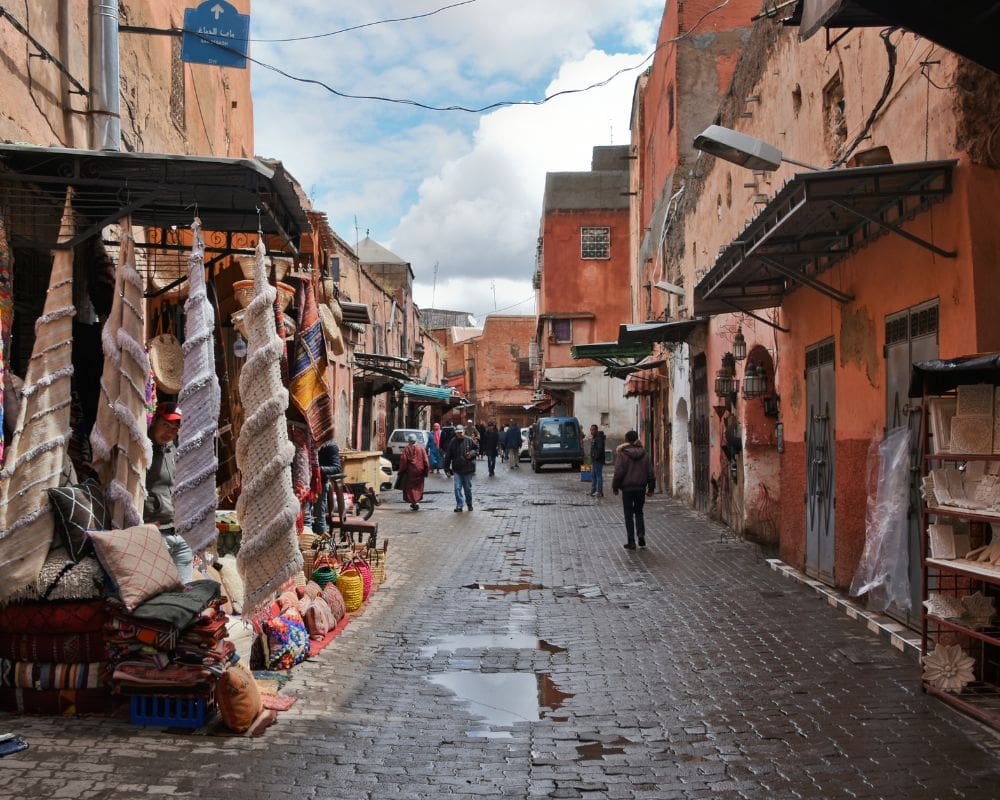

The best time to visit Morocco for fewer crowds is during the shoulder seasons, which are the periods between the peak tourist times and the off-peak season.
These shoulder seasons generally occur in early spring (March to April) and late autumn (October to November).
Early Spring (March to April)
This period is after the winter peak season and before the summer crowds arrive.
The weather is pleasantly warm, making it ideal for exploring cities and natural landscapes without the discomfort of high temperatures.
Major tourist sites and cities like Marrakech, Fes, and Chefchaouen are less crowded, offering a more relaxed and authentic experience.
Late Autumn (October to November)
The late autumn months see a significant decrease in tourist numbers following the end of the summer vacation period.
The weather remains mild, suitable for both city tours and outdoor adventures in the Atlas Mountains or the Sahara Desert.
With fewer tourists, there’s easier access to popular attractions, and you can expect shorter lines and more personal space.
☔ Rainy season in Morocco
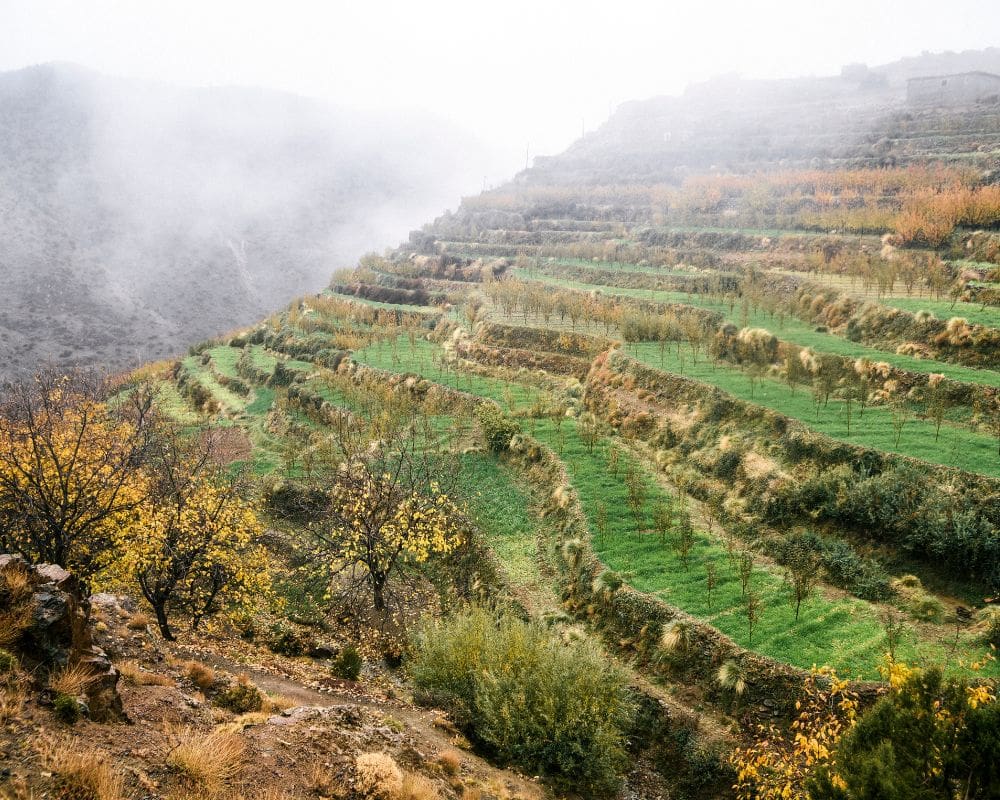

The rainy season in Morocco typically occurs during the winter months, from November to March. This period is characterized by varying amounts of rainfall depending on the region, with the north and coastal areas receiving the most precipitation.
In northern and coastal regions, cities like Tangier, Casablanca, and Rabat experience the bulk of their annual rainfall during these months.
The rain can range from light showers to heavier downpours, but it’s usually not continuous, allowing for breaks of clear weather.
Inland areas, including Marrakech and Fez, see less rainfall compared to the coast, with occasional showers interspersed with dry days.
The southern and desert regions, such as the Sahara, receive minimal rain, maintaining their arid climate even during the winter months.
🕌 Best time to visit Marrakech and Fez
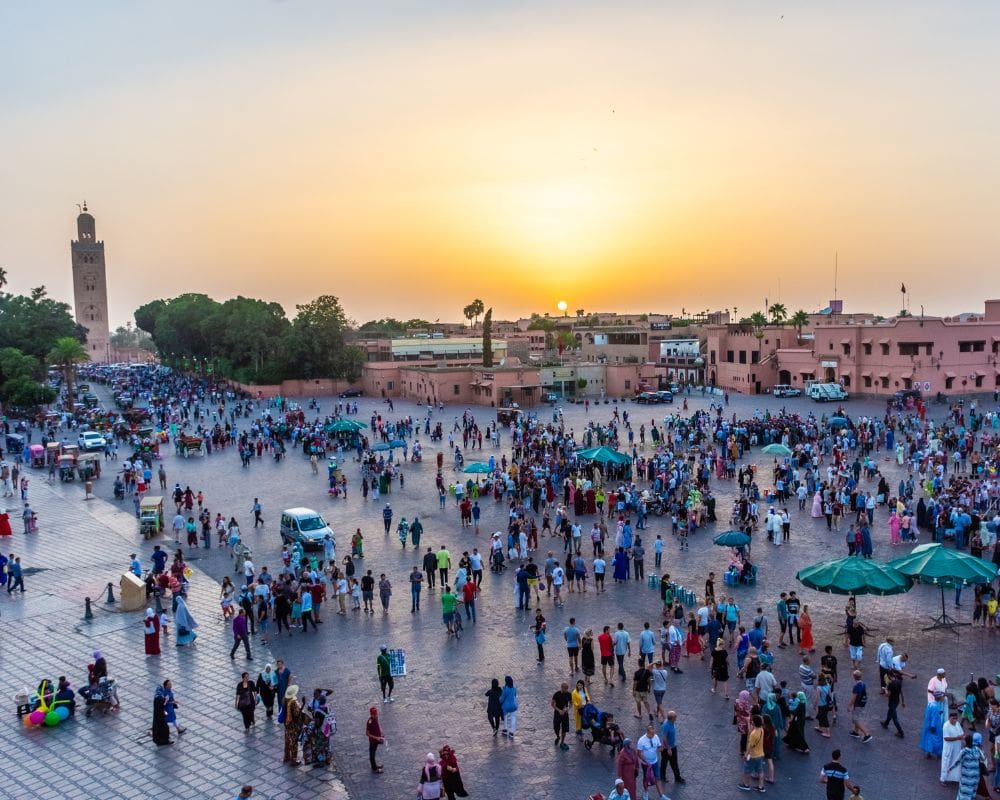

Marrakech and Fez, two of Morocco’s most iconic cities, are steeped in rich history and culture, making them prime destinations for cultural tours.
The best time to embark on such tours is during the spring (March to May) and autumn (September to November). These months offer a pleasant climate, with temperatures that are warm but not excessively hot, unlike the scorching summer months.
🏺 Ideal season for visiting ancient Kasbahs
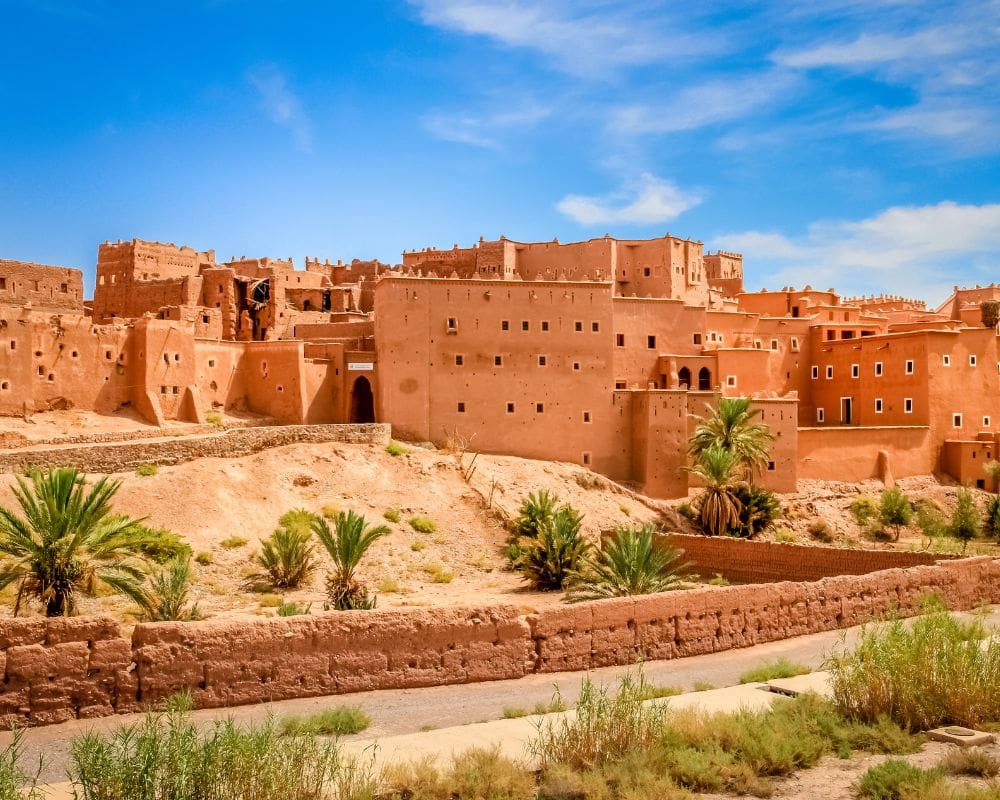

The ideal season for visiting the ancient Kasbahs in Morocco is in the autumn, specifically from September to November. During this period, the climate is mild and agreeable, making it perfect for exploring these historic fortresses.
The Kasbahs, primarily located in the southern and central parts of Morocco, are renowned for their unique architecture and historical significance, and autumn weather provides a comfortable backdrop for such explorations.
In places like Aït Benhaddou, a UNESCO World Heritage site and one of the most famous Kasbahs, the cooler autumn temperatures allow for a more leisurely and in-depth exploration of the area.
This season also sees a reduction in the tourist crowds that flock to these sites in the summer, offering a more tranquil and authentic experience.
🏖️ Best time to visit Morocco beaches
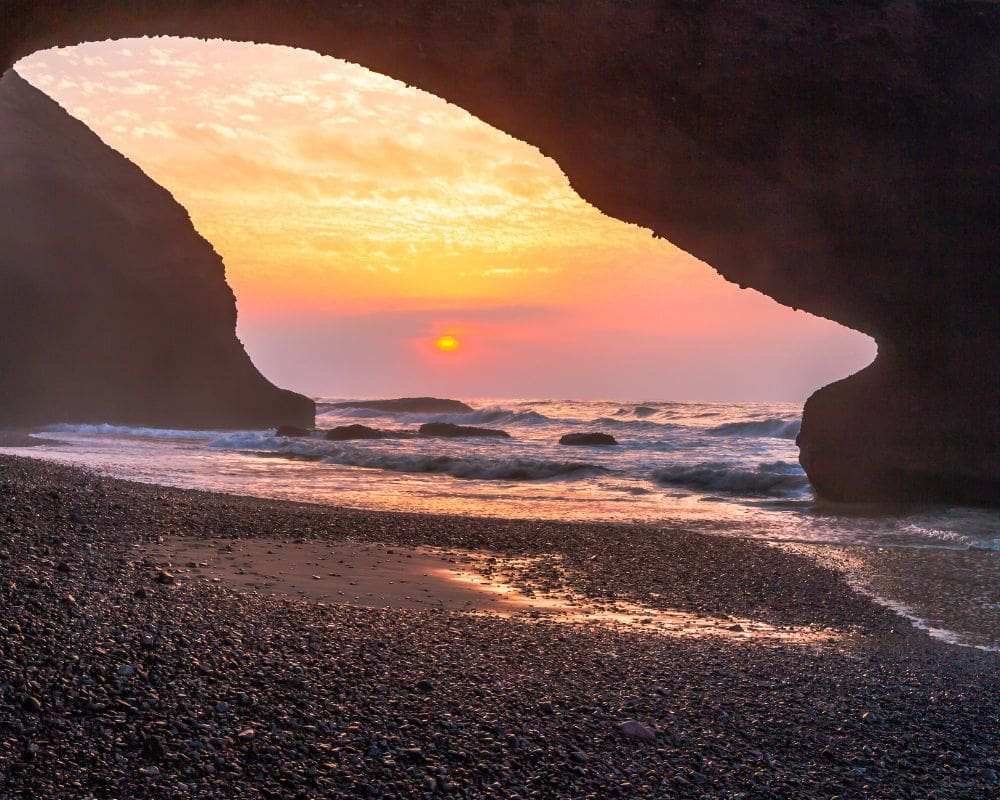

The optimal months for beach visits along Morocco’s Atlantic Coast are from June to September. During these summer months, coastal cities like Agadir, Essaouira, and El Jadida come alive with vibrant beach culture.
Agadir, known for its long sandy beaches and modern resorts, offers a perfect blend of relaxation and entertainment. The weather is consistently sunny and warm, but not overwhelmingly hot, thanks to the cooling Atlantic breeze.
Essaouira, with its unique blend of beach relaxation and cultural experiences, is another gem on the Atlantic coast.
Famous for its strong winds, it is particularly popular among windsurfers and kitesurfers during this time. The mild summer temperatures make it comfortable for those looking to simply relax on the beach or explore the historic medina.
El Jadida and other coastal towns also present golden sandy beaches and a variety of water-based activities, from swimming to jet skiing.
🏄 Best time to visit Morocco for surfing
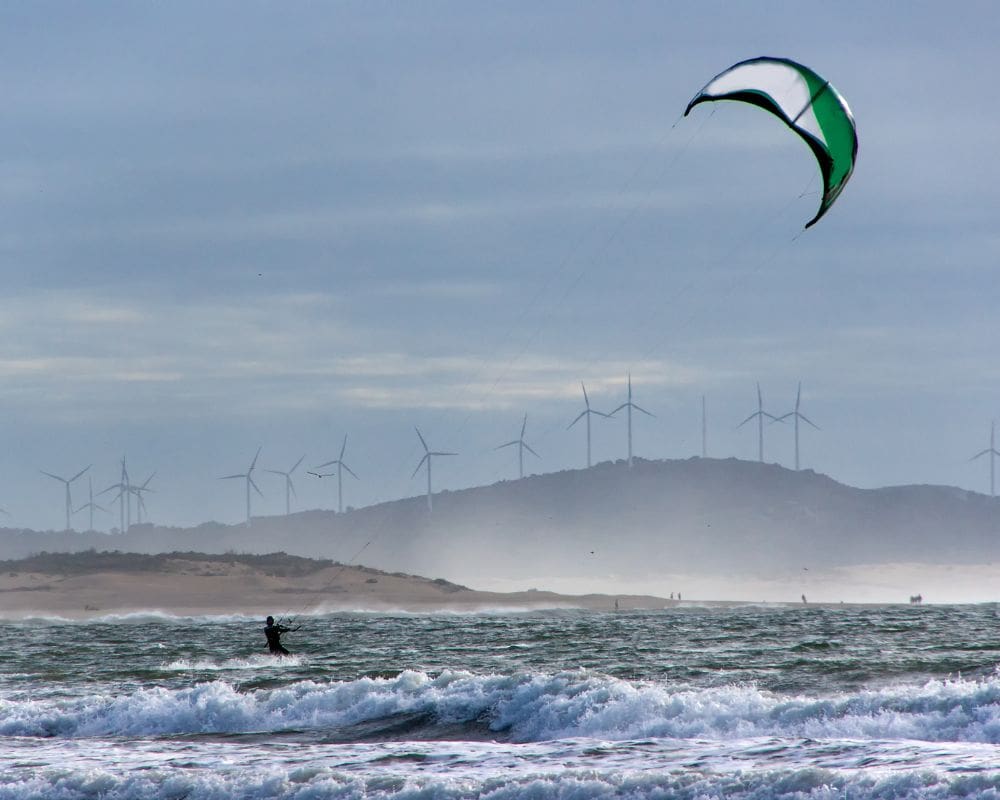

The best time to surf in Morocco is from September to April, with the peak surf season being during the winter months from November to March.
This period aligns with the North Atlantic swell season, bringing consistent and high-quality waves to Morocco’s coast, especially to renowned surf spots like Taghazout, Tamraght, and Essaouira.
September to November: surfing in Morocco
The early surf season starts with smaller, more manageable waves, ideal for beginners and intermediate surfers. Water temperatures are warmer, around 18°C to 21°C (64°F to 70°F), making it comfortable for longer surf sessions.
December to March: peak surf season in Morocco
This is when the Atlantic swells are at their strongest, attracting experienced surfers. Wave heights can reach impressive levels, offering challenging conditions for advanced surfing.
Water temperatures drop slightly to around 16°C to 19°C (61°F to 66°F), so a wetsuit is advisable.
Surfing in Morocco in April
The tail end of the surf season, with conditions starting to mellow, perfect for those who prefer less crowded spots. Water temperatures begin to rise again, making for pleasant surfing conditions.
⛰️ Best time to visit Morocco’s Atlas Mountains
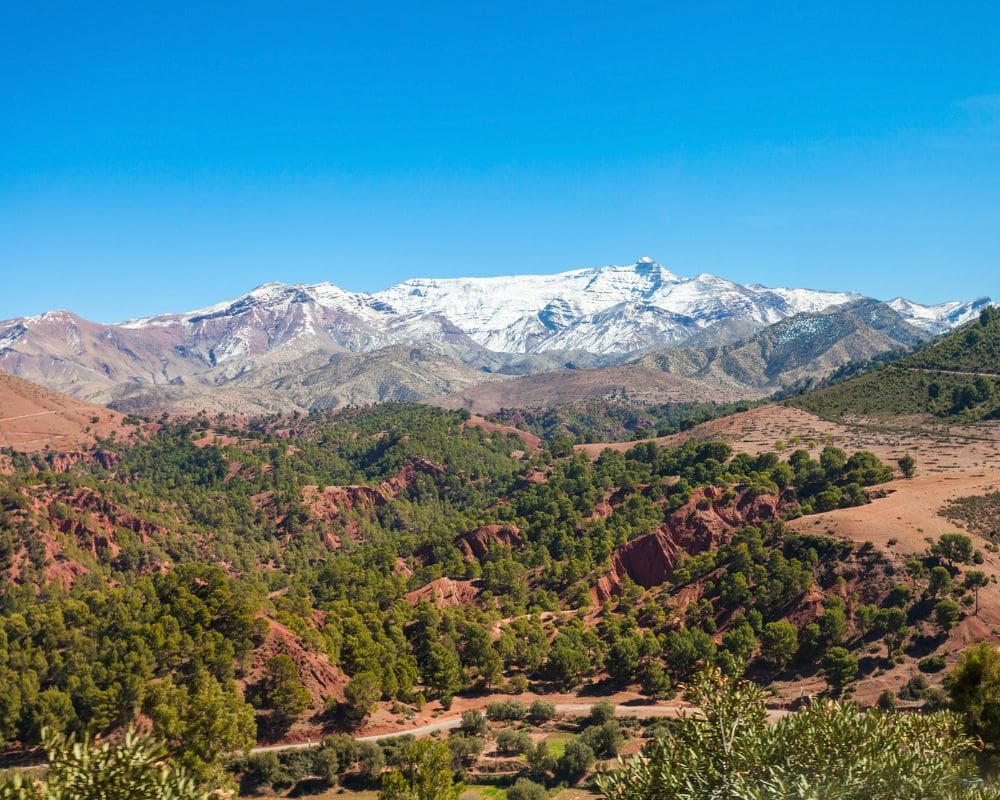

The prime time for trekking in the Atlas Mountains of Morocco is during the spring and autumn months, specifically from April to May and from September to October.
These periods offer the most favorable weather conditions for trekking and exploring the diverse landscapes of the region.
Spring (April to May)
The mountains are lush and vibrant during spring, with valleys blooming with wildflowers.
Average daytime temperatures range between 10°C to 20°C (50°F to 68°F), providing a comfortable climate for hiking.
Snow from the winter months starts to melt, opening up most of the trekking routes, including popular ones like Toubkal, the highest peak in North Africa.
Autumn (September to October)
The weather remains mild and stable, with fewer chances of rain or extreme heat. Daytime temperatures are similar to spring, making for pleasant trekking conditions.
The landscape turns into a palette of golden and auburn hues, offering spectacular views.
🐪 Best time to go to the Sahara Desert
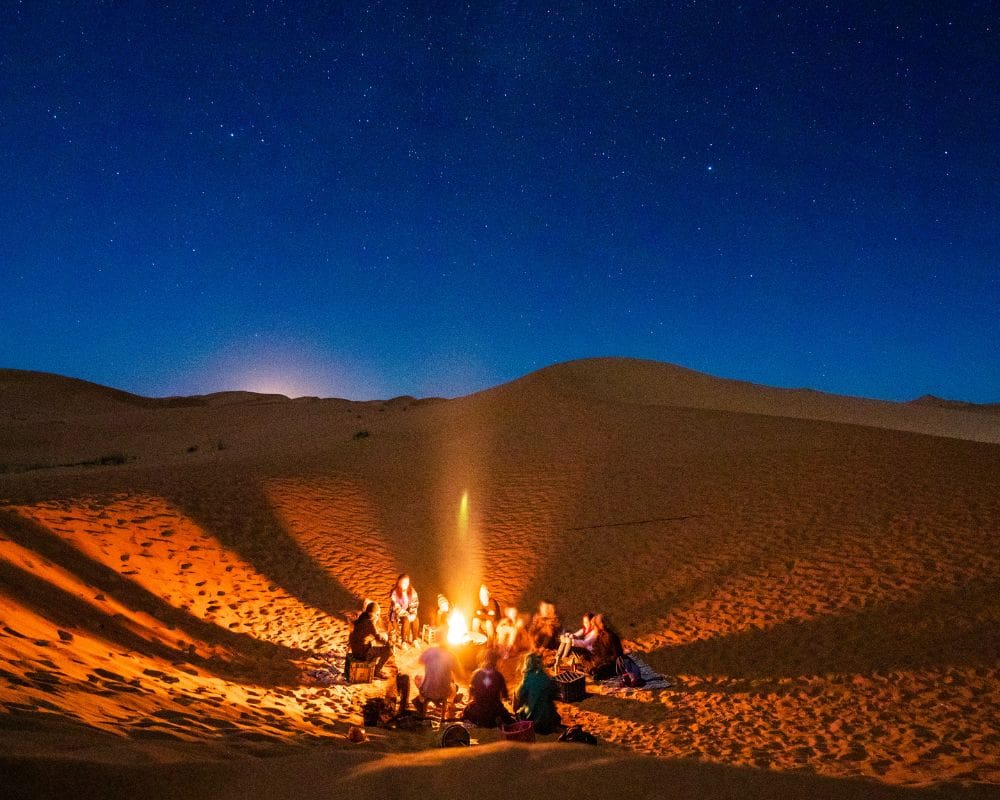

The best season for desert expeditions in the Sahara, particularly in Morocco, is during the cooler months from October to April.
This period avoids the extreme heat of the summer and offers a more comfortable and enjoyable experience exploring the vast desert landscape.
Sahara Desert in October to April
Temperatures during these months are mild during the day, typically ranging between 10°C to 27°C (50°F to 80°F), allowing for pleasant travel and exploration.
Nights can be cool, with temperatures sometimes dropping near or below freezing, especially from December to February, adding to the authentic desert experience.
Late Autumn in Sahara Desert (October to November) and Early Spring (March to April)
These transitional periods are particularly favorable as they offer a perfect balance with warm days and comfortable nights.
Visitors can enjoy various activities like camel trekking, sandboarding, and star-gazing under clear desert skies.
Sahara Desert in Winter (December to February)
Although cooler, this is still a popular time for desert tours, as the lower temperatures are more manageable for daytime activities.
The dramatic temperature difference between day and night adds to the adventure of a desert expedition.
🎉 Best time to visit Morocco for events and festivals
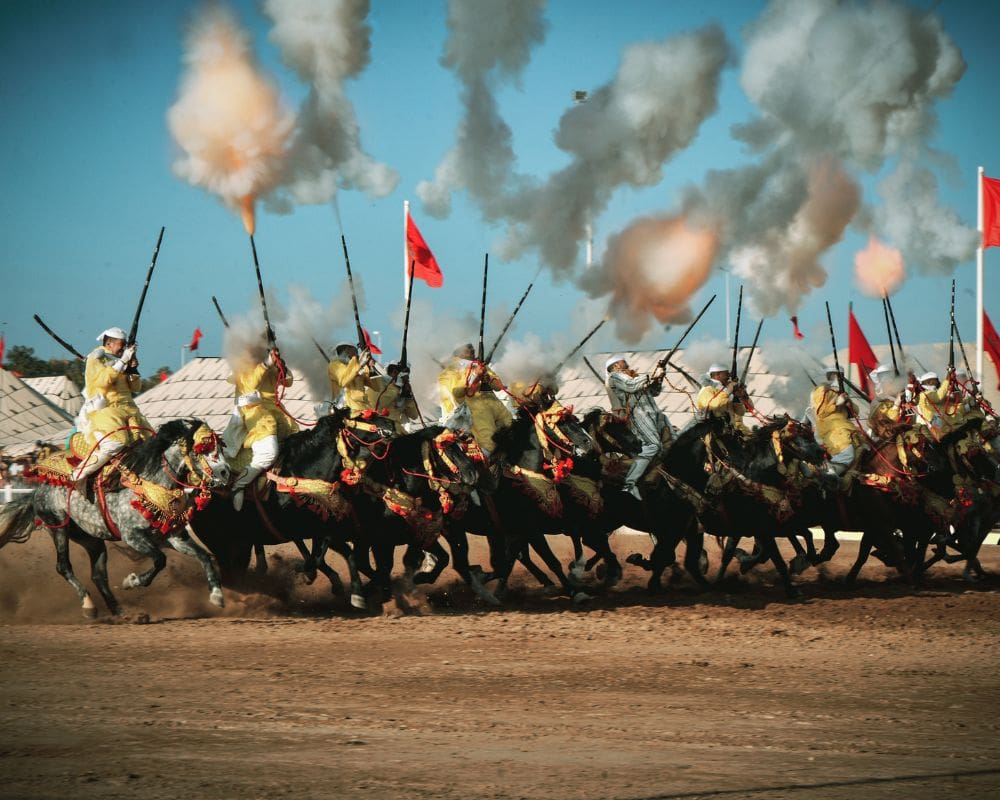

The best months to experience local festivals and traditions in Morocco are typically in the spring and autumn, aligning with some of the country’s most vibrant and culturally significant events.
The spring season from March to May hosts numerous festivals, starting with the Almond Blossom Festival in Tafraoute in February or March, celebrating the almond tree bloom with music, dancing, and local almond dishes.
In April, the Merzouga International Music Festival takes place, showcasing a fusion of world music and local Saharan culture.
The Rose Festival in El-Kelaâ M’Gouna, held in May, is a fragrant celebration of the rose harvest in the Valley of Roses, featuring parades, music, and a Miss Roses beauty contest.
The autumn season (September to November) is marked by the Erfoud Date Festival in October, celebrating the date harvest with music, dancing, and traditional Bedouin tents.
The Imilchil Marriage Festival, also in September or October, is a unique event where Berber men and women from different tribes meet to choose their spouses.
📅 Best time to visit Morocco by month
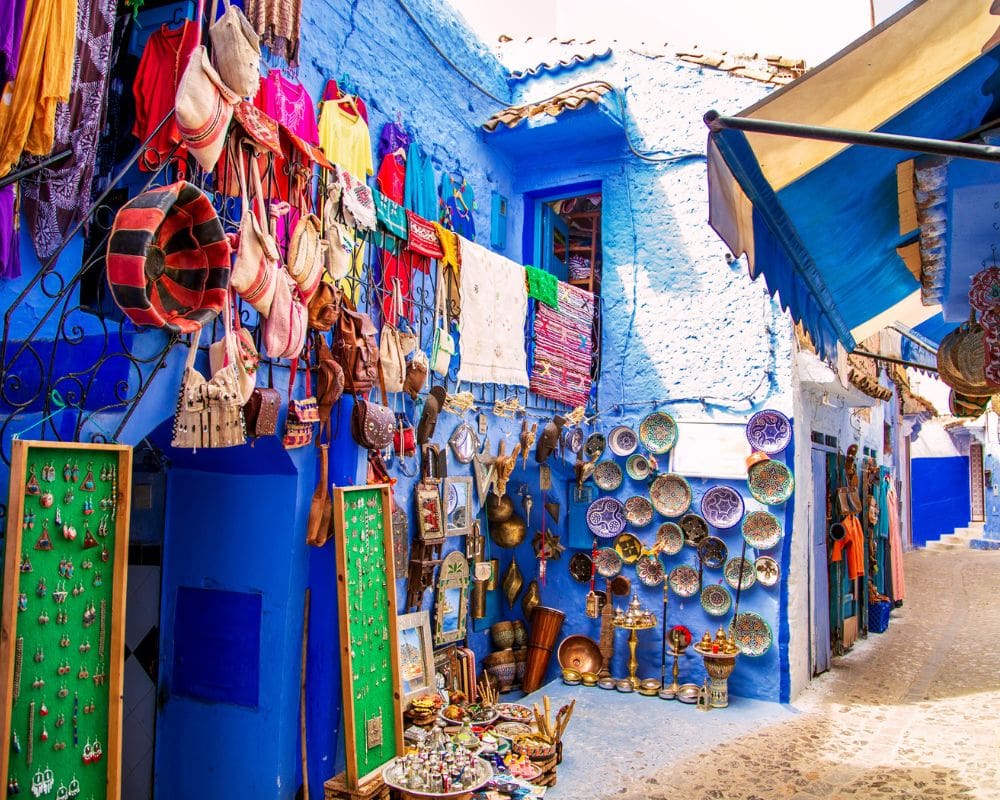

Now if you are looking for the best time to visit Morocco by month, below is a month-by-month account that can help you plan your trip to Morocco accordingly.
January in Morocco
January in Morocco is part of the winter season, offering cooler temperatures, especially in the Atlas Mountains and the desert. It’s a great month for those who enjoy quieter travels, as tourist crowds are thinner.
In cities like Marrakech and Fez, daytime temperatures are mild, ideal for city tours and cultural exploration without the intense heat of summer. In the Sahara Desert, nights can be chilly, offering a unique desert experience. January is also a time for sales in Moroccan markets, perfect for shoppers.
February in Morocco
February continues the cool, mild winter weather with a chance of rain, particularly in the north. It’s still off-peak tourist season, so it’s a good time to explore popular destinations without crowds.
In the Atlas Mountains, snow can be expected, making it great for winter sports enthusiasts. Coastal areas like Essaouira remain pleasant, and the almond blossoms in the south start to bloom, adorning the landscapes in white and pink.
March in Morocco
March marks the beginning of spring in Morocco, with warmer temperatures and landscapes starting to burst with color. This is an ideal time for outdoor activities like hiking in the Atlas Mountains, where the snow begins to melt, revealing lush valleys.
The desert regions are also more temperate, suitable for overnight desert trips. Tourist numbers start to increase, but it’s not yet peak season, so there’s a good balance of vibrant atmosphere and manageable crowds.
April in Morocco
April is one of the best months to visit Morocco. The country is in full spring bloom, offering beautiful natural scenery. It’s an excellent time for trekking, especially in the Atlas Mountains and the Rif Mountains.
The weather is warm but not too hot, ideal for city tours and cultural festivals. There’s a buzz in the air with the approaching high season, and outdoor cafes and markets are lively. It’s also a good time for coastal visits, with pleasant temperatures and sunny skies.
May in Morocco
May sees the approach of summer with warmer temperatures. It’s a fantastic time to visit the beaches of the Atlantic coast, like Agadir or Essaouira, where the weather is perfect for sunbathing and water sports.
The cities are warm, offering a true taste of Moroccan summer without the intense heat of the coming months. The countryside is still green and vibrant, and the evenings are comfortably cool, ideal for enjoying Morocco’s famous rooftop dining and nightlife.
June in Morocco
June is the start of the hot summer season in Morocco. While inland cities like Marrakech and Fez can get quite hot during the day, it’s a great time for beach destinations along the Mediterranean and Atlantic coasts.
The days are long and sunny, perfect for coastal activities. Early June is less crowded before the peak tourist season hits.
It’s also a good time to explore the High Atlas Mountains, where the higher altitude offers a respite from the heat. However, desert tours can be challenging due to the high temperatures.
July in Morocco
July is one of the hottest months in Morocco, especially in inland cities like Marrakech and Fez, where temperatures can soar. This makes it an ideal time for beach holidays along the cooler Atlantic and Mediterranean coasts.
Places like Essaouira and Agadir offer breezy and comfortable climates, perfect for water sports and sunbathing. The hot weather also means fewer crowds in the cities, offering a quieter urban experience.
However, desert excursions can be extremely hot, and trekking in the Atlas Mountains can be more challenging due to the heat.
August in Morocco
August continues the trend of high temperatures, particularly in the interior regions. Coastal areas remain popular for their more moderate climates, drawing beachgoers for relaxation and water activities.
It’s a busy month for tourism, with European holidaymakers and local vacationers. Cities can be very hot but are lively with cultural events and nightlife.
September in Morocco
September marks the beginning of the autumn season with temperatures starting to cool down, especially towards the end of the month. It’s a great time to visit as the high summer heat eases, making city tours and outdoor activities more comfortable.
The tourist crowds also begin to thin out, providing a more relaxed travel experience. This month offers a pleasant climate for exploring both the mountains and the desert, with warm days and cool nights.
October in Morocco
October is one of the best months to visit Morocco, with mild temperatures and fewer tourists. The heat of summer has passed, making it ideal for exploring the medinas of Marrakech, Fez, and other cities.
The autumn weather is perfect for hiking in the Atlas Mountains and visiting the Sahara Desert, where the days are warm and the nights are cool.
The coastal regions continue to offer pleasant weather, suitable for beach activities and water sports.
November in Morocco
In November, the weather cools further, signaling the approach of winter. This is a quiet month for tourism, offering the chance to see Morocco’s cities and landscapes without the crowds.
It’s a good time for cultural exploration and visiting historical sites in comfortable weather. While the northern parts and the Atlas Mountains can be cooler, the south, including the Sahara Desert, remains pleasantly warm during the day.
December in Morocco
December in Morocco sees the onset of winter, with cooler temperatures and a higher likelihood of rain, especially in the north. The southern regions and the Sahara Desert offer milder weather, ideal for exploring.
The Atlas Mountains might start to see some snow, making for picturesque views. December is also a festive time with Christmas and New Year’s celebrations, especially in major cities and tourist areas, offering a unique blend of Moroccan and holiday festivities.
🛐 Ramadan in Morocco
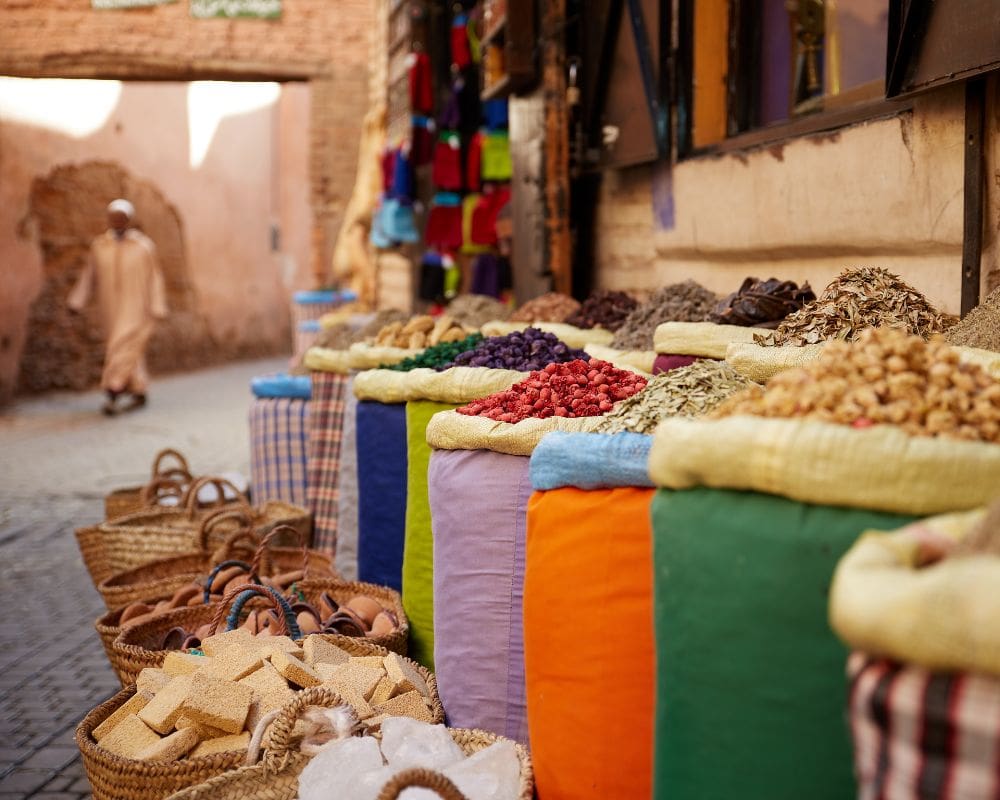

Visiting Morocco during Ramadan, the Islamic month of fasting, offers a unique cultural experience, though it requires some adjustments for travelers.
Ramadan’s dates vary each year, as they are based on the Islamic lunar calendar.
During daylight hours, Muslims fast from food, drink, and smoking. As a result, many cafes and restaurants are closed until the evening.
Many shops, especially smaller, family-run businesses, might open later and close earlier than usual. Some may close during the hottest part of the day but reopen in the evening.
Larger stores and those in major tourist areas are likely to maintain more regular hours, though they may still adjust timings slightly.
In tourist areas and larger cities like Marrakech, Casablanca, and Fes, many restaurants, particularly those catering to tourists, will remain open during the day. However, their hours may be reduced, and they might be less busy.
In more traditional or rural areas, finding open restaurants during the day might be more challenging, as many local eateries close until the evening Iftar.
Hotels, especially larger or international ones, usually continue to serve food to non-Muslim guests throughout the day.
Evenings come alive with the ‘Iftar’, the breaking of the fast, where families and communities gather for meals.
If, by any chance, you plan to visit Morocco during Ramadan, here are some tips:
- Plan your meals: Consider eating a substantial breakfast and planning where to have your other meals.
- Be discreet: If you eat in public during the day, do so discreetly out of respect for those who are fasting.
- Enjoy evening dining: Embrace the local tradition by having a larger meal after sunset when restaurants are lively and full of local patrons breaking their fast.


